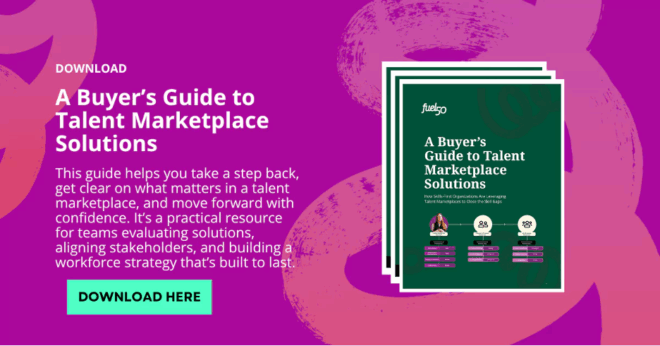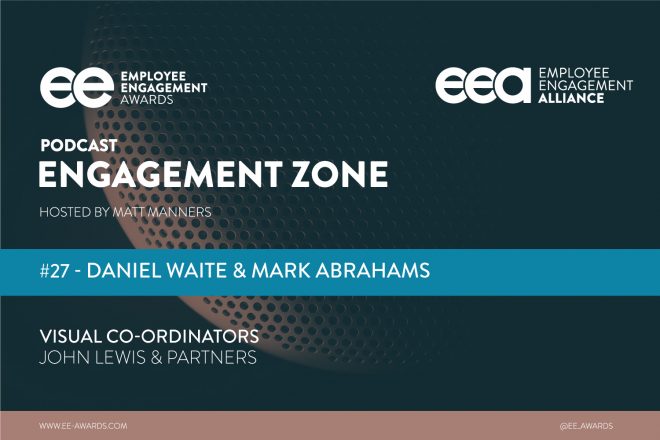
25th September 2025
How Fuel50’s Skills Intelligence Uses AI To Democratize Talent Development

This article was written by our partners at Fuel50.
Employee development is one of the hardest promises for organizations to uphold. Leaders talk about growth, opportunity, and career paths, but the reality can be far less equitable. Advancement depends on visibility rather than ability, frameworks fall out of date as work evolves, and opportunities stay hidden in silos or guarded by managers protecting their best people. The result is a system where development feels like a privilege for the few rather than a pathway for all.
This is the gap Fuel50 sought to close. By combining AI-driven matching, a living skills architecture, and predictive workforce insights, Fuel50 gives organizations the tools to make development transparent, fair, and accessible. Employees see where they stand and what skills they need to move forward, leaders gain objective data. and the organization itself unlocks talent that would otherwise remain unseen.
Why traditional approaches to employee development continue to fail
Most organizations want to give their people fair opportunities to grow, but the systems meant to guide development are encumbered with hidden flaws. Instead of creating equal access, they often reinforce the inequities they were meant to solve. We’ve seen three problems show up repeatedly, and they explain why so many developmental programs fail to deliver on their promise.
Employee growth is leashed to managerial bias and visibility
In many organizations, career advancement has less to do with proven skills and more with how visible someone is. The employees who stay close to influential managers or who know how to self-promote tend to move ahead, while their equally capable peers are overlooked. That reliance on perception sets the tone for how developmental decisions are made.
Managers often reinforce the problem without realizing it. When deciding who’s “ready” for a new project or promotion, they rely on memory and familiarity rather than objective evidence. In the absence of consistent data, those judgments reflect bias—that is, who they already know and trust—instead of who might be best suited to the opportunity.
This dynamic slowly reshapes the developmental system: Growth becomes less about building capability and more about playing the visibility game; employees who don’t seek the spotlight remain sidelined, disengagement grows, and trust in the promise of development erodes. Over time, organizations lose the skills, energy, and potential of those people who had plenty to offer but were left waiting in the wings.
Developmental paths are based on outdated job architectures
Most systems still use resumes and job titles as the foundation for employee development, but those say little about someone’s actual skills, aspirations, or potential. From the start, growth paths are biased and incomplete because they’re based on surface-level labels rather than meaningful skills data.
As a result, career frameworks quickly fall out of sync with the way work evolves. Job descriptions are written once and rarely revisited, even as the responsibilities and skills required for success shift around them. Employees who then try to use these outdated maps end up chasing developmental goals that don’t match what the business needs.
This disconnect undermines both sides of the equation. Employees lose faith in career systems that feel irrelevant to their ambitions, while leaders lack the visibility to see who’s ready for emerging roles. Development therefore stalls, skills gaps widen, and organizations underutilize talent that could thrive if the framework reflected reality.
Opportunities are hidden or hoarded
Even when organizations invest in developmental programs, the opportunities within them are rarely transparent. New projects, stretch assignments, or mentoring relationships are often shared through word of mouth instead of a system that gives all personnel equal access.
Managers compound this exclusivity by holding tight to their best people. Instead of encouraging talent to move to new teams or roles, they guard them to protect short-term performance. That instinct creates a culture where mobility feels risky, and opportunities remain locked within silos.
Predictably, employees who are eager to grow feel boxed in, while others who could be a great fit for open opportunities never get the chance. Meanwhile, the few who are in the loop accelerate, and the organization eventually suffers from uneven growth, disengaged talent, and critical skills sitting idle.
How Fuel50’s skills intelligence uses AI to democratize development
Traditional development systems fail because they lack consistency, visibility, and objectivity. Fuel50’s Skills Intelligence smoothes out the wrinkles by giving organizations a single source of truth about skills and growth. Instead of relying on subjective judgments or outdated frameworks, leaders and employees operate from the same shared language—one that’s dynamic, data-driven, and constantly refreshed by AI. That clarity makes development both scalable and fair.
Skills Intelligence creates a shared language
Developmental programs only feel fair when everyone understands the language of growth and when it stays true to what the business and market need. Fuel50’s Skills Intelligence gives organizations that shared language to keep development transparent and objective.
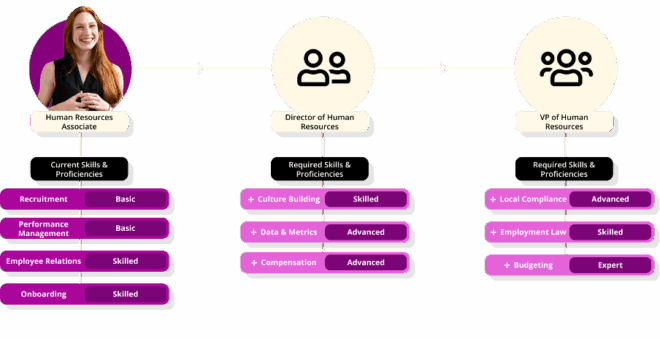
First, Fuel50’s Skills Architecture lays out what “good” looks like. Through the Talent Blueprint and Role Profile Reviews, every role is defined using real skills and proficiency levels. The ontology was built by I/O psychologists and is updated with live market data, so it reflects what happens in the world. That means employees know exactly what’s expected for each role, and leaders have clear, current standards to measure by.
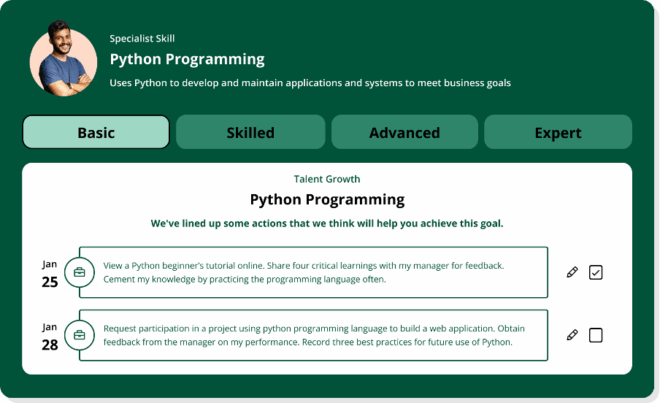
Next, the Skills Inventory turns that framework into something you can see and apply. It centralizes all skills across the organization—what people already have, which ones roles need, what’s developing, etc.—to transform disparate spreadsheets, external taxonomies, and role definitions into one clean, governed repository. With every skill mapped to defined roles and proficiencies, no employee has to guess which abilities matter. Leaders can filter by department, role priority, or skills in demand, so decisions about who moves into new opportunities are based on what people can do (or are developing toward).
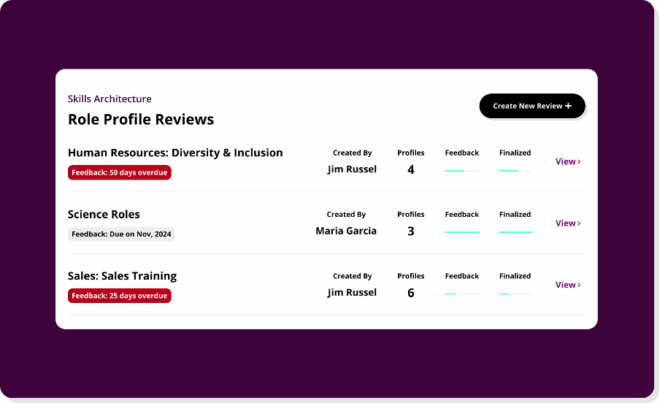
Skills Intelligence also brings in oversight, governance, and ongoing adjustment. Duplicate detection, approval workflows, alerts when skill relevance declines—these mechanisms keep the language honest and current. Leaders see dashboards that show which skills are growing, which are fading, and where gaps are emerging. When a role’s required skills shift in the market, or when internal standards change, the system helps update definitions, so position profiles stay aligned with reality.
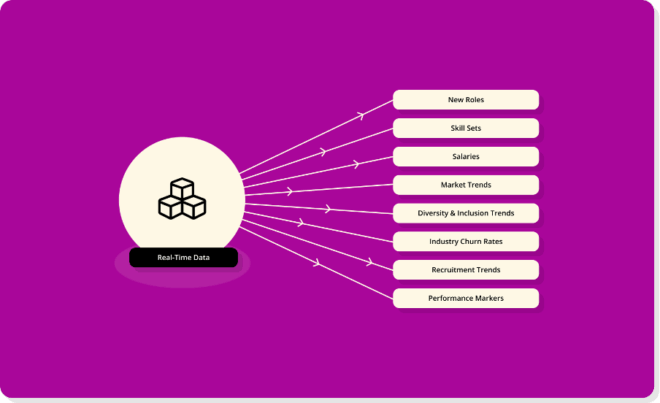
Since everyone sees the same definitions, and they’re kept up to date and tied to both company strategy and external trends, developmental conversations end the “my manager thinks I’m ready” narrative and encourages conversations such as, “These are the skills this role needs, and here’s where you are.” That shift from opinion to evidence is what makes development fair—everyone knows the goal, everyone can understand where they stand, and everyone has a path forward.
AI matching opens access to roles, mentors, and projects
In most organizations, access to opportunity depends on knowing where to look or who to ask. The most meaningful roles, mentoring relationships, and stretch projects often stay hidden in silos, passed quietly through networks or reserved by leaders for a chosen few, as discussed earlier. Fuel50 disrupts that pattern by using AI to surface opportunities that would otherwise remain invisible.
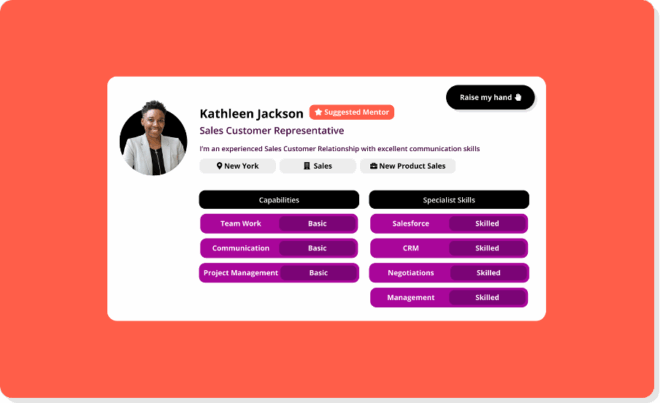
The Talent Marketplace begins by creating each person’s career DNA—a profile of their skills, values, motivators, aspirations, and learning preferences. With that foundation in place, the platform continuously scans positions, projects, gigs, mentorships, lateral moves, and even stretch assignments to match employees to opportunities that align with both their abilities and ambitions. Discovery thus depends on fit.
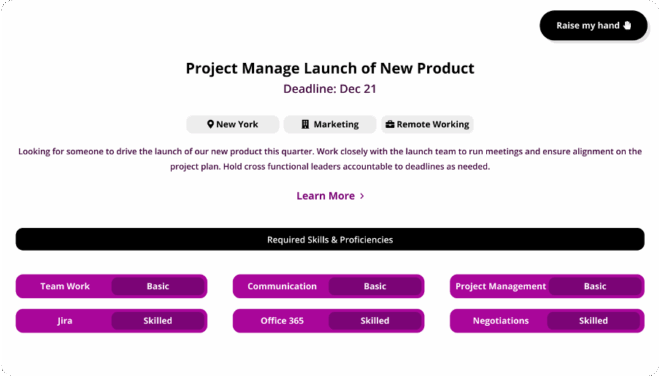
Consider someone in business operations who wants to grow in data analytics. Instead of waiting for a manager to notice, Fuel50 might match them to a short-term analytics gig or connect them with a mentor on the data team. Or, when a lateral role opens that builds on overlapping skills, the platform highlights it, even if no one broadcasted it. As a result, opportunities once lost in back channels become visible to everyone.
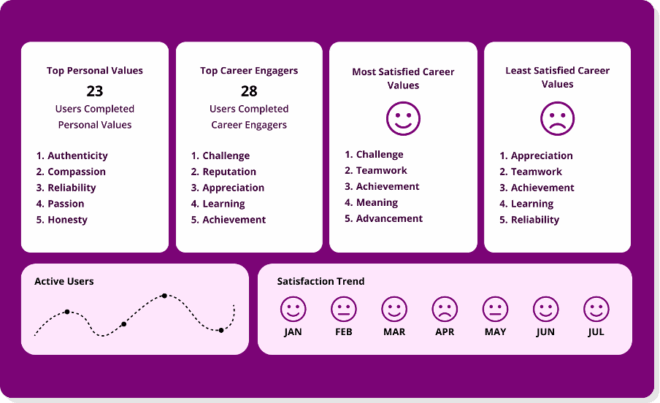
This shift transforms how development works; advancement is no longer about proximity or personality, but potential. Employees gain a fair shot at growth, projects and gigs are discoverable to all, and experimentation becomes part of the culture as people test new skills without needing permission or favors. That transparency in turn unlocks hidden talent, reduces turnover, boosts morale, and ensures the skills pipeline remains active and ready for the future.
Continuous skills data and predictive insights help leaders guide growth with objectivity
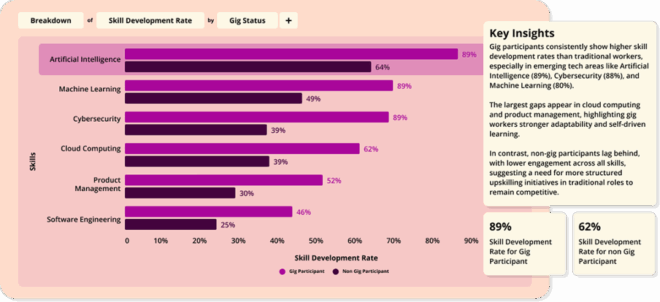
Development stalls when leaders have to rely on impressions, outdated reports, or incomplete data. Fuel50 Insights eliminates that guesswork by providing a continuous stream of skills-focused intelligence that shows where growth occurs, where it stalls, and where risk is on the rise. Instead of depending on who managers know best, organizations can guide development with evidence that every leader can access, and every employee can benefit from.
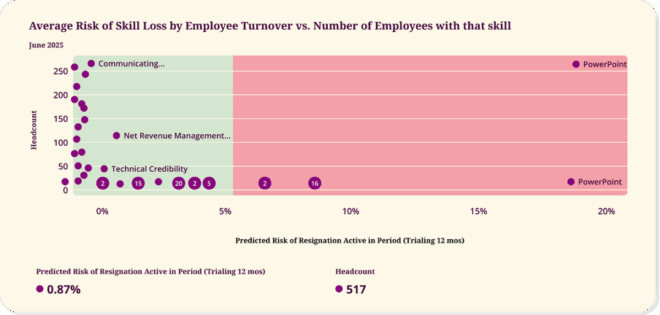
Insights delivers a set of reports and dashboards that translate marketplace activity into clear, actionable signals:
- Skill Development Drivers reveal which behaviors—like mentoring, goal setting, or gig participation—accelerate growth. This helps employees understand what will move them forward and grounds development advice on proven drivers.
- Skill Loss Risk uncovers when critical skills are concentrated in one or two individuals. By making that visible, leaders can act early with mentoring, succession planning, and cross-training to spread opportunities to more employees and reduce dependence on a select few.
- Turnover Risk Analysis predicts which roles or teams are vulnerable to attrition. Instead of waiting for resignations to highlight a problem, organizations can proactively invest in development for at-risk groups and so open growth opportunities to those most likely to leave.
- Manager Engagement vs. Team Skill Growth maps the direct connection between a manager’s involvement in development conversations and the growth of their teams. This creates accountability and prevents development from hinging on having one supportive leader while others leave their people behind.
- Single-Point-of-Failure Mapping shows which essential capabilities are limited to only one or two employees. Democratization here means giving more people access to the same skill-building opportunities, so critical knowledge is no longer trapped in silos.
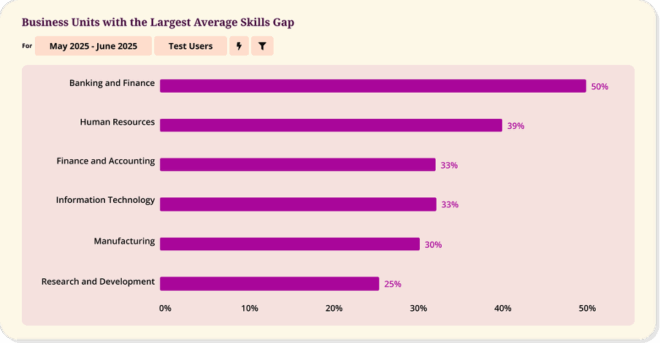
Each of these insights removes bias from the process by replacing opinion with objective evidence. Instead of promotions and projects flowing toward the most visible workers, they’re guided by clear data on who’s developing, who actively contributes, and where opportunity should go next. By embedding that clarity into everyday decisions, Fuel50 Insights turns development into a fair, transparent system that every employee can trust and participate in.


